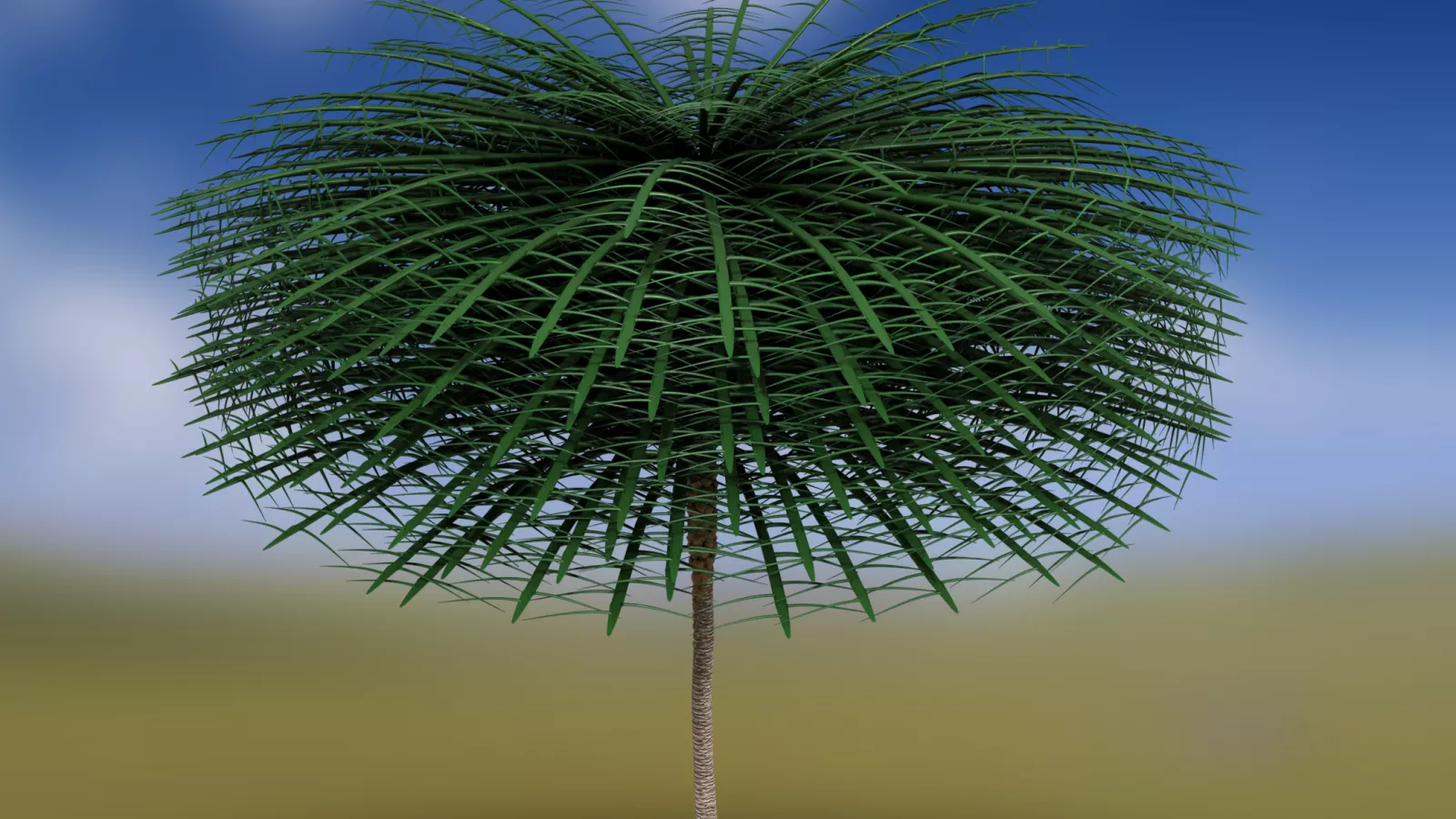In southeastern Canada, researchers have made a fascinating discovery: exceptionally preserved fossils of ancient trees with peculiar characteristics. These trees, dating back 350 million years, have left scientists puzzled due to their unprecedented features, suggesting a form of evolutionary experimentation.
The story began with an earthquake centuries ago, which caused these trees to topple and become encased in mud at the bottom of a prehistoric lake. Uncovered in a quarry in New Brunswick in 2017, these fossils stunned geologists with their remarkable attributes.
Unlike typical fossilized trees that reveal only their trunks, these specimens boast an extraordinary density of over 250 leaves arranged in a spiral pattern around the upper part of the trunk. Standing about 8.7 feet tall, with leaves reaching up to 9.8 feet long, these trees, dubbed Sanfordiacaulis, likely evolved this unique layout to maximize sunlight absorption for photosynthesis.
Their relatively short stature suggests they may represent an early instance of smaller trees thriving beneath taller ones. This discovery challenges our current understanding of tree architecture and growth, resembling modern tropical tree models but with notable differences.
Sanfordiacaulis likely stood out during the Carboniferous period, similar to how quiver trees and baobabs attract attention today. These fossils provide insight into a period of significant plant diversification during the Devonian and Carboniferous epochs, representing an evolutionary experiment that may have ultimately faltered.
This study underscores the complexity and diversity of ancient plant life, emphasizing the ongoing process of evolutionary experimentation that shaped the plant kingdom over millions of years.















































